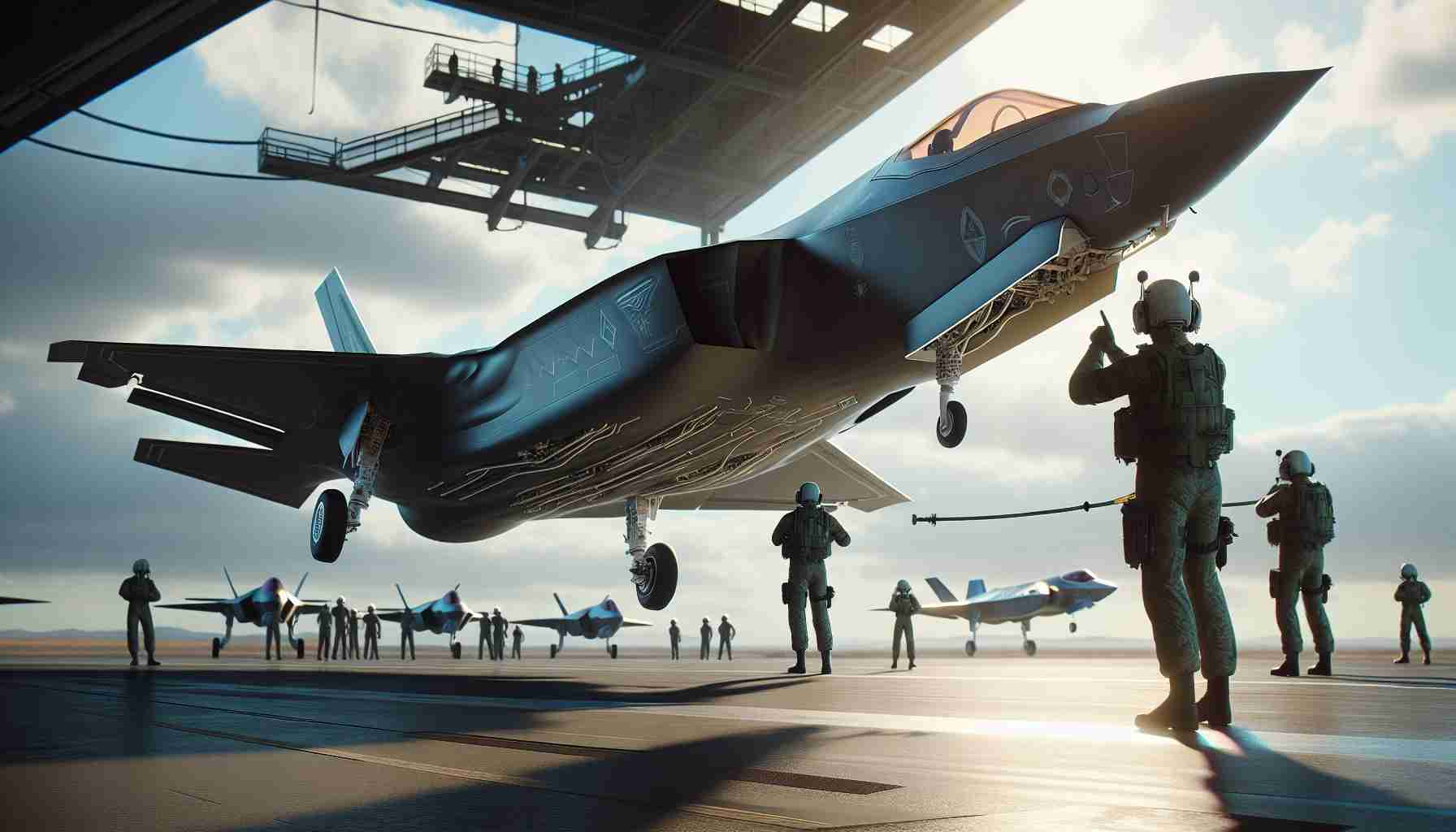In a groundbreaking development for fighter pilot training, the F-35 program has enhanced its curriculum by combining Full Mission Simulators (FMS) with Modified Mission Rehearsal Trainers (MMRT) for the first time. This step forward aims to equip pilots with the skills needed to tackle modern combat challenges through advanced tactical training.
The integration of FMS and MMRT is a strategic move to allow pilots to engage in sophisticated scenarios, including complex 8-aircraft operations. These exercises are meticulously designed to mirror high-intensity war environments, such as Offensive Counter-Air Escort and the Suppression of Enemy Air Defences. This innovation demonstrates a commitment to refining military training tactics to meet evolving threats.
The MMRT, requiring less space than conventional simulators, enables a higher number of pilots to train simultaneously, while still supporting large-scale operational simulations. During training sessions, pilots meticulously plan missions, conduct simulated flights, and thoroughly review their performance, ensuring they gain comprehensive and realistic preparation for real-world combat.
The recent successful integration test proved the system’s efficacy in readying pilots for the intricacies of modern warfare. Looking ahead, the first MMRT units are expected to be delivered to the U.S. Air Force by 2025. The program also anticipates an array of upgrades, including a cutting-edge visual display system for Poland in 2026, further enhancing mission realism.
Since its inception, the F-35 training program has been instrumental in training thousands of pilots and maintainers worldwide, underscoring its pivotal role in global defense readiness.
The Future of Pilot Training: A Technological Leap that Could Revolutionize Air Combat
Enhancing Human-Machine Collaboration
In an impressive leap for military aviation training, the blending of Full Mission Simulators (FMS) with Modified Mission Rehearsal Trainers (MMRT) heralds a new era not just for pilot training, but also for the development of advanced simulation technologies. This bold combination may well reshape how pilots prepare for contemporary combat missions, impacting both military effectiveness and technology’s role in human-machine interactions.
Beyond the Battlefield: Technological Implications
The newfound ability to simulate complex, high-intensity war environments in a controlled setting is poised to advance virtual reality (VR) and augmented reality (AR) technologies. These fields could leverage improvements in realism and interactivity to enhance training across various sectors, from emergency response to aerospace engineering.
Interesting Facts and Controversies
While this technological integration is impressive, it also raises several intriguing debates. Critics argue that heavy reliance on simulations might lead to overconfidence, with pilots potentially ill-prepared for the unpredictable nature of actual combat. On the flip side, supporters highlight that such technology offers experiences too dangerous or costly to conduct in real life, thereby priming pilots for scenarios they may not commonly encounter.
Impact on the Development of Humanity and Technology
This increased realism in training simulates psychological and physical strains of combat, preparing pilots not just for conflict but also enhancing decision-making skills under pressure. The ripple effect of such technology is vast, affecting even non-military applications, such as civilian flight training and disaster response planning.
Advantages and Disadvantages
Advantages include enhanced preparatory experiences for pilots, fostering a better understanding of advanced warfare tactics without the immediate risks involved. The efficiency driven by the MMRT, requiring less physical space, also means training facilities can accommodate more pilots simultaneously. However, the transition may face logistical challenges, including maintaining the upkeep and constant upgrading of these sophisticated systems.
Deep Dive: What’s Next?
With the U.S. Air Force expecting the first MMRT deliveries by 2025, and Poland set to receive upgraded systems by 2026, the innovation journey is ongoing. The true test lies in how these advancements will translate into real-world efficiency and combat readiness.
In our relentless march toward a future dominated by technology, it remains essential to balance digital training prowess with the unpredictability of human elements and decision-making in warfare. What other sectors stand to gain from such technological integration, and how might this redefine human roles in high-stress environments?
For further exploration, readers can delve into domains such as Lockheed Martin, renowned for defense innovations, and DARPA, a fountainhead of technological development.
The interplay between cutting-edge technology and traditional training methods could carry implications far beyond the cockpit, influencing how humanity prepares for future uncertainties across domains.






















